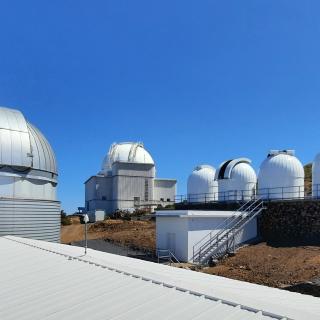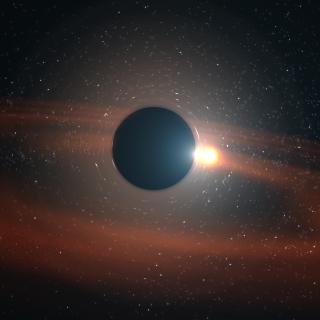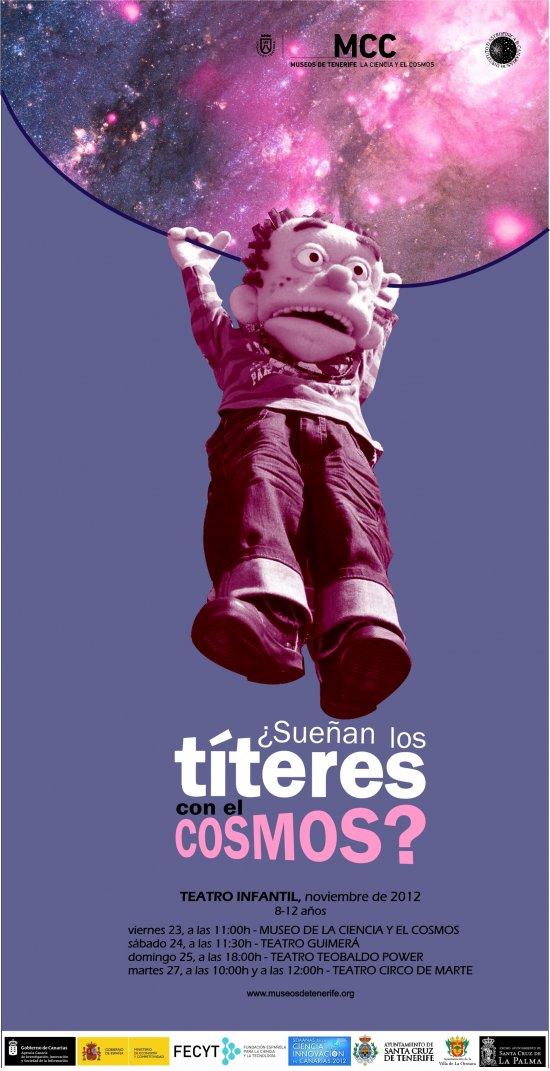It may interest you
-
 The Instituto de Astrofísica de Canarias (IAC) and the KU Leuven , Belgium, have amplified their framework of collaboration in astrophysical research. The two institutions have signed an agreement which gives continuity to the operations of the Mercator Telescope at the Roque de los Muchachos Observatory (ORM), which started in 2002, and whose work will be strengthened by the installation of a new instrument called MARVEL (Mercator Array for Radial Velocities). Mercator is a semi-robotic telescope with a 1.2 metre primary mirror. Its name comes from that of the famous Flemish cartographerAdvertised on
The Instituto de Astrofísica de Canarias (IAC) and the KU Leuven , Belgium, have amplified their framework of collaboration in astrophysical research. The two institutions have signed an agreement which gives continuity to the operations of the Mercator Telescope at the Roque de los Muchachos Observatory (ORM), which started in 2002, and whose work will be strengthened by the installation of a new instrument called MARVEL (Mercator Array for Radial Velocities). Mercator is a semi-robotic telescope with a 1.2 metre primary mirror. Its name comes from that of the famous Flemish cartographerAdvertised on -
 An international team, in which the Instituto de Astrofísica de Canarias participates, has succeeded in mapping for the first time the three-dimensional structure of the atmosphere of an exoplanet, that is a planet beyond the Solar System. This research, published today in Nature , has been able to discover very strong winds that carry chemical elements such as iron and titanium, which create certain weather patterns through the planet's atmosphere. This mapping opens the door to more comprehensive and detailed studies of the chemical composition and climate of other planets. Enric PalléAdvertised on
An international team, in which the Instituto de Astrofísica de Canarias participates, has succeeded in mapping for the first time the three-dimensional structure of the atmosphere of an exoplanet, that is a planet beyond the Solar System. This research, published today in Nature , has been able to discover very strong winds that carry chemical elements such as iron and titanium, which create certain weather patterns through the planet's atmosphere. This mapping opens the door to more comprehensive and detailed studies of the chemical composition and climate of other planets. Enric PalléAdvertised on -
 The team led by Claudia Gutiérrez from the ICE-CSIC and IEEC has used the Gran Telescopio Canarias (GTC) and the Nordic Optical Telescope (NOT), at the Roque de Los Muchachos Observatory, of the Instituto de Astrofísica de Canarias (IAC), in La Palma. The CSS161010 burst reached its maximum brightness in just 4 days in a small galaxy 500 million light-years away from us. An international scientific team, led by the Institute of Space Studies of Catalonia (IEEC) and the Institute of Space Sciences (ICE-CSIC), has managed to detect an exceptionally fast and bright cosmic burst in a smallAdvertised on
The team led by Claudia Gutiérrez from the ICE-CSIC and IEEC has used the Gran Telescopio Canarias (GTC) and the Nordic Optical Telescope (NOT), at the Roque de Los Muchachos Observatory, of the Instituto de Astrofísica de Canarias (IAC), in La Palma. The CSS161010 burst reached its maximum brightness in just 4 days in a small galaxy 500 million light-years away from us. An international scientific team, led by the Institute of Space Studies of Catalonia (IEEC) and the Institute of Space Sciences (ICE-CSIC), has managed to detect an exceptionally fast and bright cosmic burst in a smallAdvertised on
